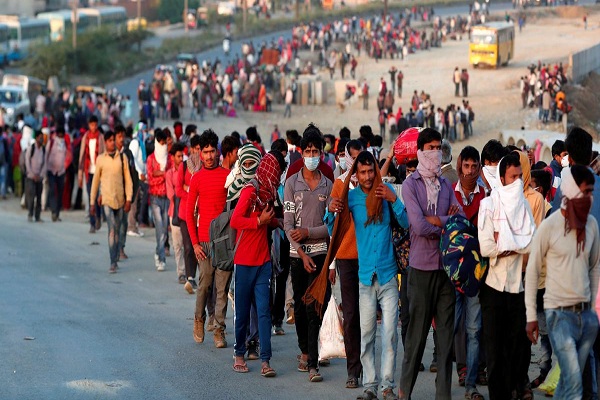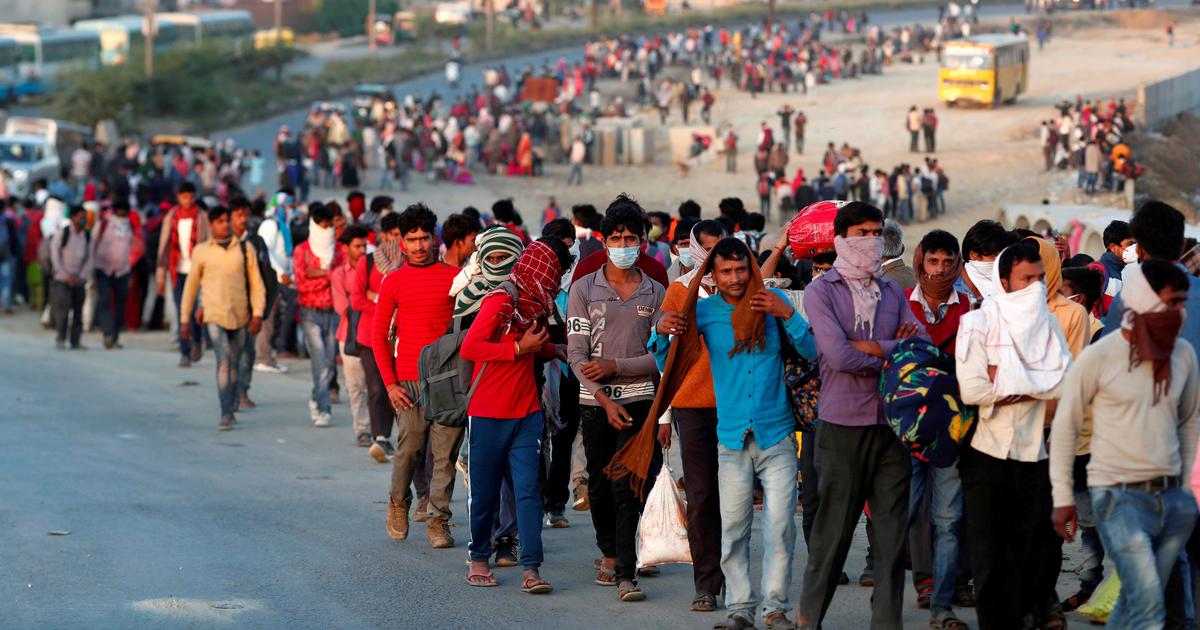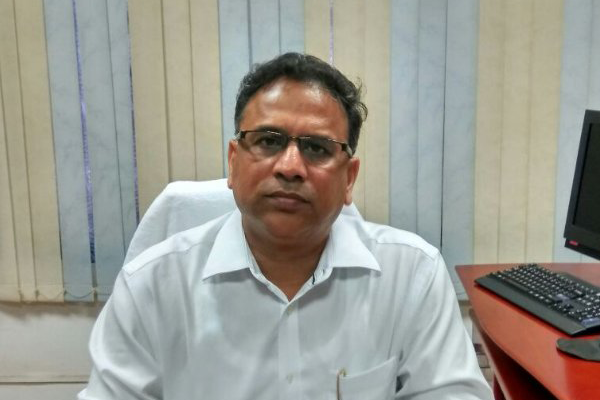
COVID-19 pandemic has exposed the fragility of our urban systems like never before. In India and across the globe, the pandemic has taken its roots in cities and proven to be the single most potent disruptive force to the “engines of the economic growth”. The pandemic has very clearly demonstrated that while national and state governments play a crucial role towards a systematic and unified approach to response and mobilizing resources, it is the cities and urban systems where the battle is being fought. Making cities function in the backdrop of the COVID-19 pandemic is proving to be the biggest challenge. The fallout from the pandemic will lead to many new norms once cities start bouncing back and moving towards the recovery path. However, we must not forget that COVID-19, in fact, is just another threat in a landscape fraught with disasters – earthquakes, floods, severe weather, which have all brought city life to its knees but never at this scale, speed, intensity and duration. In all of these

scenarios, the urgency to revisit and adapt our city planning principles and approaches, cannot be
emphasized more. Highlighting this writes Parul Agarwal, Country Programme Manager, UN-Habitat India and Hitesh Vaidya, Director, NIUA.
As this crisis unfolds, the blatant everyday inequalities faced by the urban poor, migrants, blue-collar workers, daily wagers, homeless, and a host of people part of the complex urban fabric are hard to filter through the lens of growth. To provide basic minimum amenities to those left behind in the growth story, have once again directed focus on “Cities for All”. A central question looming amongst the city leaders, administrators and experts is how to translate lessons learned from this pandemic into city’s institutional and governance frameworks to reduce urban inequalities and burden of share on marginalized people. A focused approach for resilient governance needs to be pondered if we want to get back on track for sustainable and smart growth. This requires going back to the drawing board and start thinking about long term structural changes and reforms.
Therefore, urban governance challenge at the local level becomes very crucial to create enabling conditions which continue to attract economic activity, maintain competitiveness and ensure equitable access, while balancing negative impacts on the environment. Urban local governance in India received a major boost with the enactment of the 74th constitutional amendment act in 1993, which introduced a new third tier at the local levels to the government hierarchy. Yet, 25 years later, the structural reforms to devolve administrative, fiscal and functional autonomy to municipalities and urban local bodies have been grossly underwhelming in their implementation. This pandemic has reemphasized the need to move from business as usual approach to reimagining, realigning and linking urban local institutions for urban resilience and local economic development opportunities.
We cannot go back to pre-COVID days and we should use this crisis as an opportunity not only to designing new norms but to push for transformational changes for a better future. The following paragraphs provide some reflections in this area.
Stronger regional and local coordination for resilient rural and urban interdependence
One of the most prominent features of this crisis has been the dependence of cities on its hinterlands for food security and in turn the dependence of rural
areas on cities for livelihoods and access to basic health and amenities. This has played out in the movement of people, intra-regional and cyclical migration from rural to urban areas. The well-established organic links between rural and urban areas, by taking a regional perspective of planning can effectively respond to the need for an integrated approach for resilient shelter and livelihoods. The current fragmentation of urban planning, and service delivery functions at multiple hierarchies of government establishments become even more complex across jurisdictional boundaries.
The 74th Amendment requires the constitution of Metropolitan Planning Committees (MPC) in metropolitan areas and District Planning Committees (DPC) in every district for the purpose of preparing and consolidating comprehensive development plans based on the local level planning process. Even though a mandatory provision, these processes must be strengthened and enabled for better coordination and cooperation amongst urban local bodies. Guidelines for integrated urban and territorial planning are available here.
Empower mayors and local administrators to fast-track local action
This is also the time to push for decentralized governance and strengthen local administration as sound bottom-up governance approaches have been more successful in the wake of disaster response. As the locally elected public figure, mayors represent the government and the community, are agents of accountability to the people, and responsible for convening and coordinating with the network of urban stakeholders to achieve a common vision. The crucial step towards empowering mayors is the security of long-term tenure. Municipalities in India have a wide variance in the tenure of mayors; while some have directly elected 5-year term, some states go with indirectly elected mayors with a 1-year term. It is to be considered whether the manner of electing a Mayor and term should be uniform across local bodies. There should also be certain clauses on the qualification of hiring of a mayor with more emphasis on education as similar to collectors and commissioners. Providing a leadership role to the urban local body will not only incentivize positive growth and investment, but it will also strengthen the ability for a cohesive and uniform response between mayors and municipal commissioners. It will also bring multiple silos with overlapping authorities like urban planning, financing and budgeting, and service delivery at one place. Urban leaders can access the informative resource on urban planning and management here.
Move from rigid sectoral approaches to spatially integrated planning at Local Level
The pandemic has clearly demonstrated that spatial neighbourhood maps with granular details have been effective tools not only monitoring but also responding to the crises. It is also important to adopt an integrated approach where health, social protection, shelter, livelihoods, mobility and other areas are under one umbrella for most efficient utilization of available human, technical and financial resources. Establishing systems and processes for emergency response that are grounded in data, mapping and analysis of inter-linked sectors is possible in real-time with smart technologies. The Global Alliance for Urban Crisis in collaboration with UN-Habitat has developed tools for local neighbourhood profiling for crisis available here.
Strengthening citizen and grassroots engagement for effective resource mobilization
Participatory planning that facilitates collective design, planning, implementation and feedback from multiple stakeholders and interest groups enhance accountability, transparency and information
dissemination. Collaboration across levels of government, private sector, civil society and other
stakeholders are surely going to be a new norm and must be initiated so as to bridge the capacity constraints of each stakeholder group to respond to a crisis on its own. Local partnerships which leverage the strengths of each stakeholder and collectively benefits by the ability to roll-out a comprehensive response by sharing resources, capabilities and capacities can be an effective and efficient approach. Some guidance on engaging with local governments and grassroots organization can be accessed here.
Fiscal autonomy of the local governments must be strengthened for sustainable delivery of essential services
The administrative and fiscal authority must be reconciled with the delivery of functions expected from the mayors and elected councils. Local governments rely on a combination of user charges, taxation and inter-governmental charges for providing city services. International best practices recommend local taxes and fees should yield stable revenue by means of sales taxes, income and payroll taxes, property taxes, and motor vehicles tax, and increased parking fees. The urban local bodies must improve the tax collection efficiency, and promote transparency, accountability and participation and performance-based incentive structures should be designed to make ULBs financially
independent. A transparent formula-based allocation from federal and provincial governments which is predictable would provide greater confidence in budget estimation for local service delivery. A guidance handbook on municipal finance for urban leaders is available here.
Citizen accountability and performance review
Citizen accountability for inclusive and equitable development to measure how services are being experienced by users and providers. It can be used to generate data and suggestion to improve feedback and accountability loops between service providers and users, as well as comparing functioning and performance satisfaction. It will help to bring together the demand side, i.e. community and urban residents and the supply side, i.e. service providers/ municipalities/ urban local bodies to jointly analyze the performance of service delivery and urban mandates. Benchmarking helps local governments and citizens identify norms, realistic targets, and performance gaps, this also means that measuring and monitoring results has to be made more systematic, effective, and transparent (e.g., uniform disclosure laws and a robust urban indicator system). This is critical for the whole infrastructure development process, particularly better development planning and continued operations and maintenance.
Final Remarks
Cities’ preparedness, response and recovery from future pandemics and crises rest on robust governance systems. The conventional approaches to social and physical infrastructure development, basic service delivery and housing have to be re-positioned for achieving paradigm shift. A fundamental shift and redefining the city mandates, roles and responsibilities of actors at Central, State and Local levels is mandatory for new age transformations. Furthermore, existing bottlenecks and barriers that have withheld implementation of critical reforms must be removed. To this end, decentralization and fiscal federalism that brings local governments and users in proximity to urban services and development must be enabled. The trust between communities and local leadership must be strengthened through transparency and accountability seated in advocacy, data and evidence to monitor the progress towards vision for the city. Local leadership must be encouraged to innovate and
leapfrog from business-as-usual tools and technologies. This really means that role of centre and
state governments should be to support by creating conditions, enabling environment and necessary tools to encourage and incentivize cities to make local governments directly accountable to citizens, whereas, the role of cities should be focused on providing better services while balancing fiscal and functional imperatives.






















